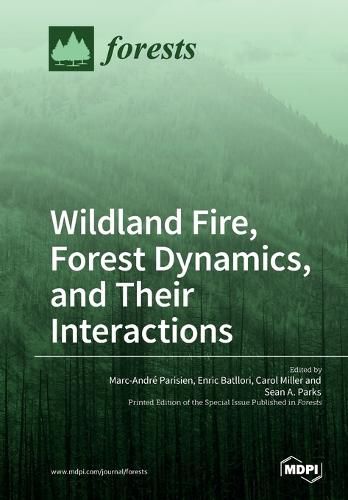Readings Newsletter
Become a Readings Member to make your shopping experience even easier.
Sign in or sign up for free!
You’re not far away from qualifying for FREE standard shipping within Australia
You’ve qualified for FREE standard shipping within Australia
The cart is loading…






This title is printed to order. This book may have been self-published. If so, we cannot guarantee the quality of the content. In the main most books will have gone through the editing process however some may not. We therefore suggest that you be aware of this before ordering this book. If in doubt check either the author or publisher’s details as we are unable to accept any returns unless they are faulty. Please contact us if you have any questions.
Wildland fire is an important, pervasive, and a sometimes-destructive ecological process in many forest ecosystems across the globe. In some cases, wildland fire maintains and reinforces forest dynamics. This is common, for example, in forests with thick-barked species that are adapted to frequent, low-severity fires or in forests where species’ regenerative traits (e.g., serotiny, resprouting) allow them to endure regimes of recurrent high-severity fire. However, wildland fire can also act as a catalyst that changes the successional trajectory of forest ecosystems, particularly if the factors responsible for historical fire regimes (e.g., frequency, severity, or season) have been substantially altered and exceed species’ adaptive capacity. Examples of these situations include effects of extreme fire weather and drought, fuel buildup due to fire exclusion or insect-induced mortality, and interactions between these factors. Some of these situations may result in fire-induced conversions from forest to non-forest ecosystems.
$9.00 standard shipping within Australia
FREE standard shipping within Australia for orders over $100.00
Express & International shipping calculated at checkout
This title is printed to order. This book may have been self-published. If so, we cannot guarantee the quality of the content. In the main most books will have gone through the editing process however some may not. We therefore suggest that you be aware of this before ordering this book. If in doubt check either the author or publisher’s details as we are unable to accept any returns unless they are faulty. Please contact us if you have any questions.
Wildland fire is an important, pervasive, and a sometimes-destructive ecological process in many forest ecosystems across the globe. In some cases, wildland fire maintains and reinforces forest dynamics. This is common, for example, in forests with thick-barked species that are adapted to frequent, low-severity fires or in forests where species’ regenerative traits (e.g., serotiny, resprouting) allow them to endure regimes of recurrent high-severity fire. However, wildland fire can also act as a catalyst that changes the successional trajectory of forest ecosystems, particularly if the factors responsible for historical fire regimes (e.g., frequency, severity, or season) have been substantially altered and exceed species’ adaptive capacity. Examples of these situations include effects of extreme fire weather and drought, fuel buildup due to fire exclusion or insect-induced mortality, and interactions between these factors. Some of these situations may result in fire-induced conversions from forest to non-forest ecosystems.